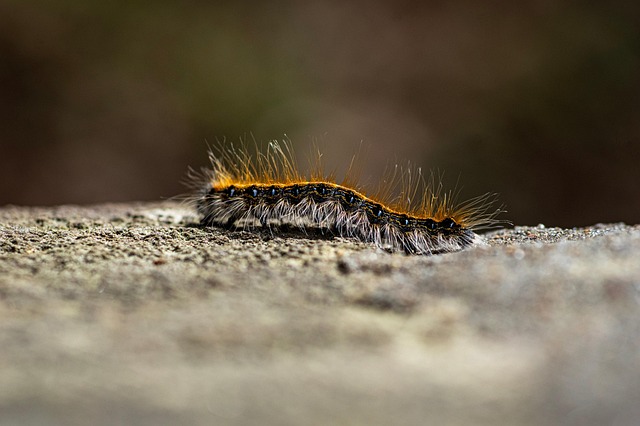Wood boring insects, including beetles and termites, pose significant threats to both residential and commercial properties. Professional wood pest control services offer effective solutions like natural repellents and targeted treatments for minor infestations, with more aggressive methods for severe cases. Eco-friendly options are available for sustainable pest control. Prevention, early detection, and prompt action are key; regular inspections in older buildings can significantly reduce risk. Eco-conscious practices provide effective protection without harming the environment.
Wood boring insects can cause severe damage to homes and businesses, from structural weakness to aesthetic deterioration. Understanding these pests is the first step towards effective removal. This article explores various strategies to tackle infestations, including professional wood pest control techniques, eco-friendly solutions for residential and commercial settings, and prevention methods. Learn about different types of wood boring insects, their impact, and the best practices for permanent removal, such as targeting wood beetle extermination.
Understanding Wood Boring Insects: Types and Damage Caused
Wood boring insects are a common problem for both residential and commercial properties. These pests include various beetles, termites, and other wood-eating organisms that can cause significant damage if left unchecked. Understanding the types of wood boring insects and the damage they cause is crucial when considering effective treatments for removal.
Different species of wood boring insects target specific parts of a structure. For example, carpenter bees burrow into wood to create nesting tunnels, while powder post beetles feed on the cell walls of wood, leading to weak and brittle structures. Termites, on the other hand, consume wood from the inside out, often remaining undetected until substantial damage has occurred. Professional wood pest control services employ eco-friendly solutions, such as natural repellents and targeted treatments, to effectively eliminate these pests. For severe infestations, more aggressive methods like termite extermination or beetle fumigation might be required.
Professional Wood Pest Control: Effective Strategies and Techniques
Professional wood pest control offers highly effective strategies and techniques for eliminating wood boring insect infestations. Trained specialists employ a combination of advanced treatments, including chemical pesticides, bait systems, and heat or cold treatment methods, to target and eradicate these pests. Chemical applications are carefully measured and controlled to minimize environmental impact, ensuring safety for both residents and the ecosystem.
For residential areas, professionals utilize specialized equipment and tailored solutions to address wood boring beetle infestations in homes and structures. Commercial settings require a different approach, with larger-scale treatments and eco-friendly insect control methods gaining popularity. These methods aim to remove insects without causing harm to valuable wooden assets or disrupting business operations, making them ideal for office buildings, warehouses, and historical sites.
Eco-Friendly Solutions for Residential and Commercial Spaces
Many modern homeowners and business owners are seeking eco-friendly solutions for wood boring insect infestations, opting for methods that minimize environmental impact while effectively eliminating pests like wood boring beetles. Traditional chemical pesticides can be harmful to both people and the planet, driving a shift towards professional wood pest control services leveraging safer alternatives. Natural barriers, beneficial insects, and heat or cold treatment are among the popular eco-friendly tactics gaining traction in residential and commercial settings.
These eco-friendly wood insect solutions not only protect structures from damage but also promote a healthier indoor environment for occupants. Residential wood pest treatments often involve targeted applications of organic compounds, while commercial wood insect removal may require more extensive strategies due to larger areas and higher risk levels. Regardless of the setting, integrating eco-conscious practices into pest control for wood boring insects offers a win-win: effective protection without compromising the well-being of people or the planet.
Prevention and Early Detection: Key Steps to Avoid Infestations
Prevention and Early Detection are critical components in managing wood boring insect infestations. Regular inspections and proactive measures can significantly reduce the risk of these pests infiltrating your property. Homeowners and business owners alike should be vigilant, especially when dealing with wooden structures. By identifying potential entry points, such as cracks, crevices, or damaged areas, you can seal them off before insects take residence. Maintaining proper ventilation, keeping wood materials away from exterior walls, and promptly addressing any signs of infestation are essential practices.
Early detection involves staying alert for telltale signs like holes in wood, shavings, or peculiar odors. Professional wood pest control services recommend regular examinations, particularly in older buildings or those with historical wood elements. Eco-friendly insect solutions can be employed to target specific pests, like wood boring beetles, without causing harm to the environment or inhabitants. Prompt action upon detection is key; a professional’s expertise ensures effective extermination and provides valuable insights for future prevention strategies.
In addressing wood boring insect infestations, a multi-pronged approach is key. Understanding the specific types of these pests and their damaging capabilities is crucial. Professional wood pest control offers effective strategies for severe cases, while eco-friendly solutions provide residential and commercial spaces with safer alternatives. Prevention and early detection remain paramount to avoid future infestations. By combining these methods, homeowners and businesses can effectively eliminate wood boring insects and protect their valuable structures.
